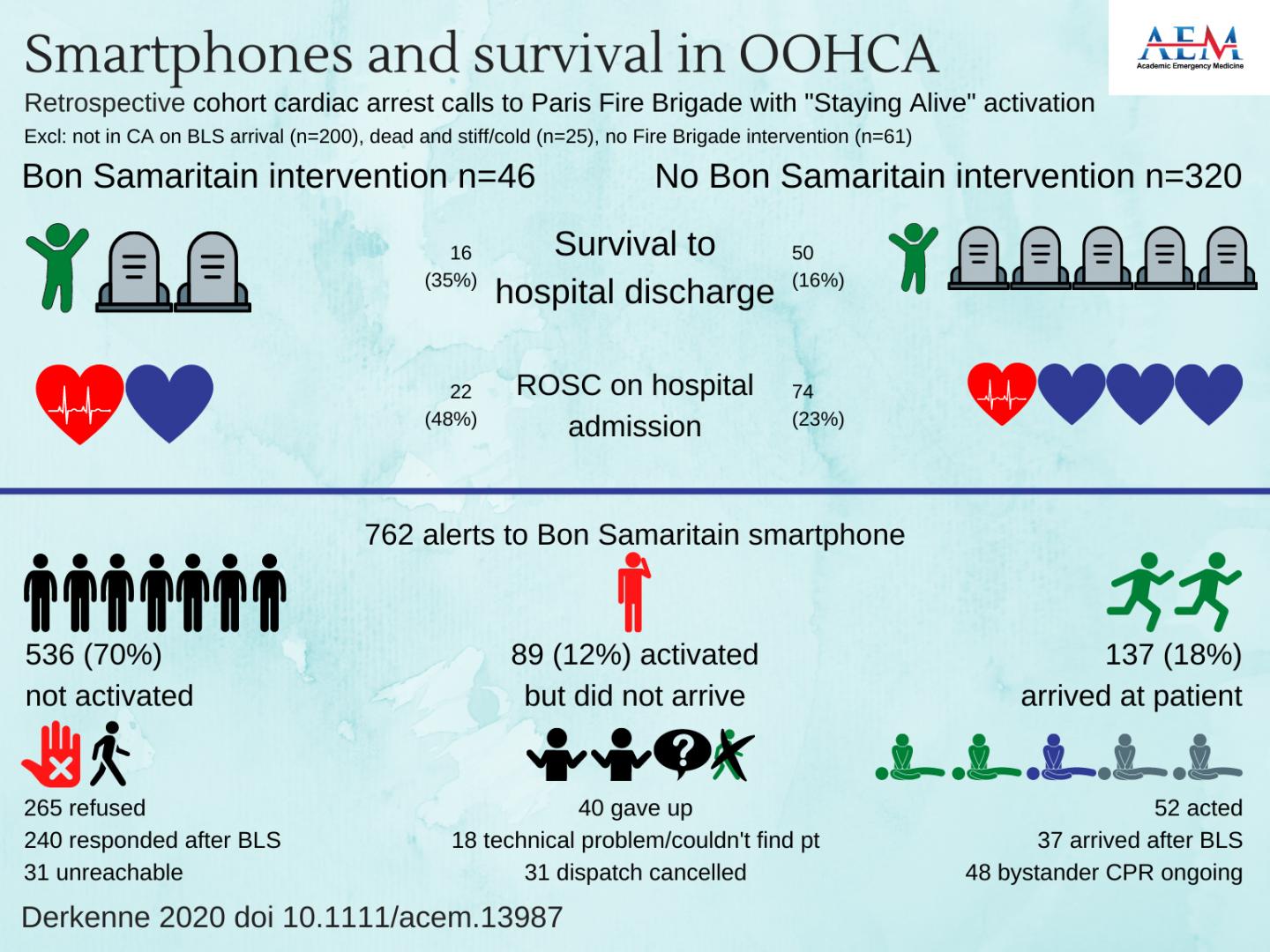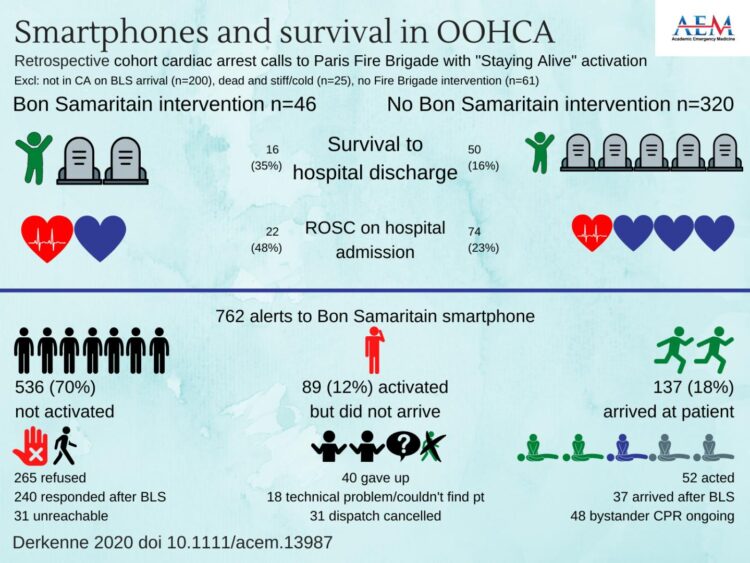
Credit: KIRSTY CHALLEN, B.SC., MBCHB, MRES, PH.D., LANCASHIRE TEACHING HOSPITALS, UNITED KINGDOM
DES PLAINES, IL — Mobile smartphone technology can accelerate first responder dispatch and may be instrumental to improving out of hospital cardiac arrest (OCHA) survival. That is the conclusion of a study published in the October 2020 issue of Academic Emergency Medicine (AEM), a journal of the Society for Academic Emergency Medicine (SAEM).
The lead author of the study is Dr. Clement Derkenne, an emergency physician in the emergency medical department, Paris Fire Brigade, Clamart, France. The findings of the study are discussed in a recent AEM podcast, We Didn’t Start the Fire, But Can Antiacid Monotherapy Stop the Fire?
In France, the introduction of the mobile application “Staying Alive” (a free mobile smartphone application, available in 18 languages and compatible with all operating systems) improved healthcare delivery and OHCA survival outcomes within one year in the Greater Paris area (July 2017 to 2018).
The application allows registered first responders, commonly referred to as “Bons Samaritains” (BS), located near an OHCA scene, to be alerted via a “push notification.” Upon acknowledgment of the notification, available BS are directed toward the scene of OHCA and receive a map of AEDs in the area.
SA is available on all smartphone platforms and uses geolocalization services to flag nearby AEDs. It was first integrated to the Paris Fire Brigade Greater Paris Area CPR protocols in 2017.
The study researchers concluded that smartphone apps that match trained responders to nearby cardiac arrest victims may be a valuable way to improve response times in out of hospital cardiae arrest; however, their impact on clinical outcomes and overall cost effectiveness remains unclear.
###
ABOUT ACADEMIC EMERGENCY MEDICINE
Academic Emergency Medicine, the monthly journal of Society for Academic Emergency Medicine, features the best in peer-reviewed, cutting-edge original research relevant to the practice and investigation of emergency care. The above study is published open access and can be downloaded by following the DOI link: 10.1111/acem.13987. Journalists wishing to interview the authors may contact Stacey Roseen at [email protected].
ABOUT THE SOCIETY FOR ACADEMIC EMERGENCY MEDICINE
SAEM is a 501(c)(3) not-for-profit organization dedicated to the improvement of care of the acutely ill and injured patient by leading the advancement of academic emergency medicine through education and research, advocacy, and professional development. To learn more, visit saem.org.
Media Contact
Stacey Roseen
[email protected]
Related Journal Article
http://dx.





